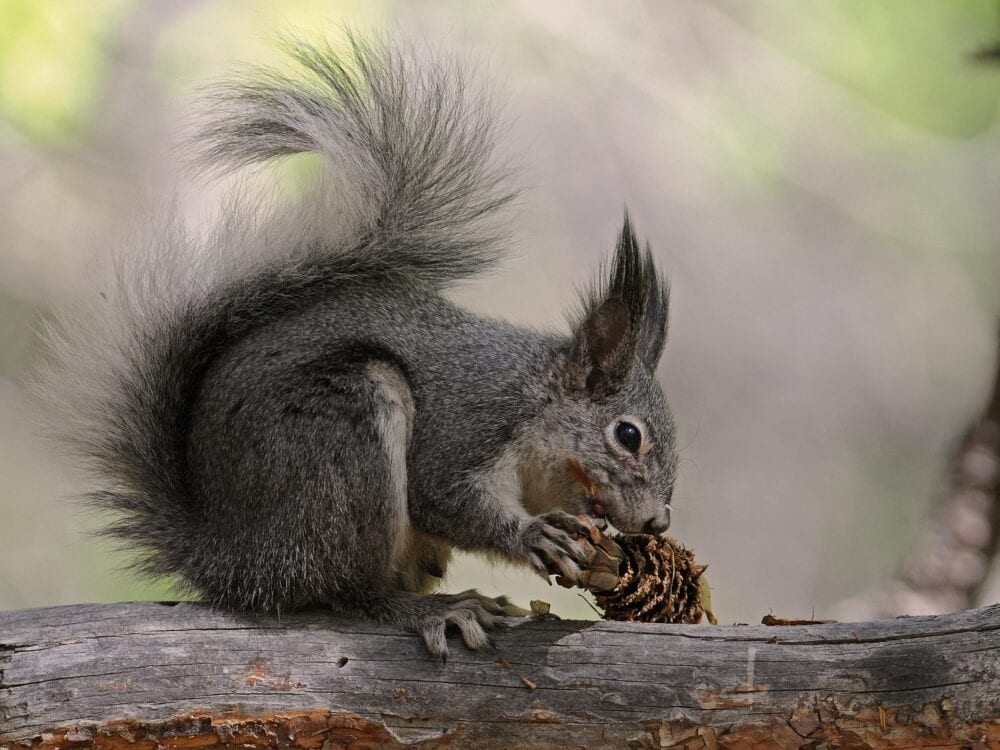
By Mariana Rivera Freeman
Among the many species of the rodent family Sciuridae, tree squirrels are generally known as asocial: they live alone and minimize social contact with each other. Two such solitary species found here in northern New Mexico — the Abert’s squirrel and the red squirrel — happen to be experts at social distancing, a concept we have all recently become very familiar with.
While there can be clear downfalls to living a solitary life as a prey species, the benefit of commanding a territory of resources outweighs the risks for tree squirrels. And perhaps one of the greatest benefits to living alone in the wild is avoiding disease. Many species of ground squirrels (including the Gunnison’s Prairie Dog, found in the Valles Caldera) live in colonies or other communal groups. Though this gives them safety in numbers, living in close quarters means diseases spread quickly and can devastate populations.
When a virus or bacteria strikes a population of tree squirrels, however, the minimal contact between individuals means the disease will have a harder time spreading, and epidemics are far less common for these species. Tree squirrels have been practicing social distancing for millennia!
So in celebration of these solitary but charismatic animals — who keep much farther than six feet away from each other whenever they can help it — let’s take a closer look at the ones in our backyards.
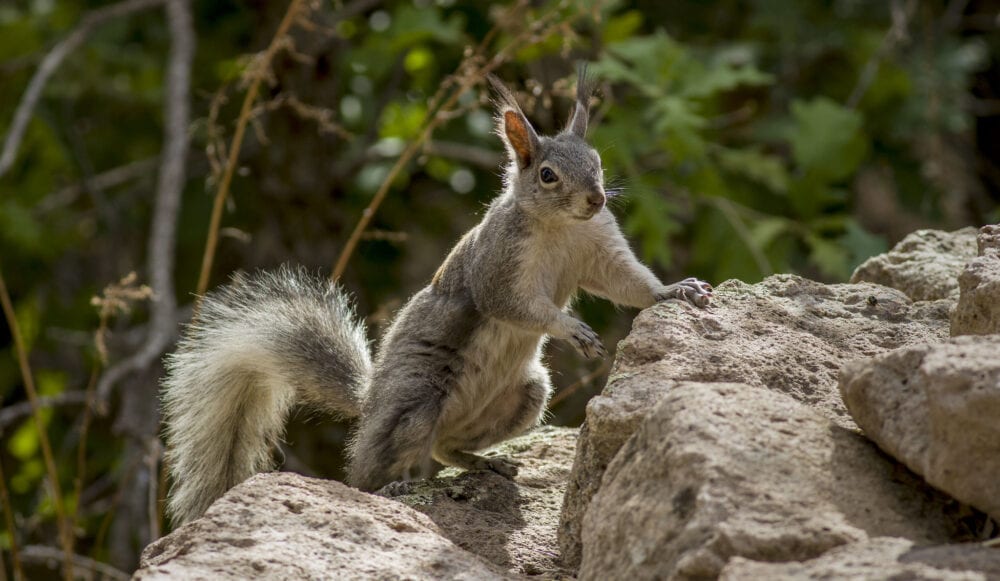
The Abert’s Squirrel (Sciurus aberti)
Among the most elusive of the tree squirrels is the Abert’s squirrel, also called the tassel-eared squirrel. This animal is so named for the prominent tufts of fur on the tips of their ears in winter, called tassels. They are camera-shy and difficult to spot.
To identify an Abert’s squirrel by sight, you want to look for a large squirrel (450-900g) with:
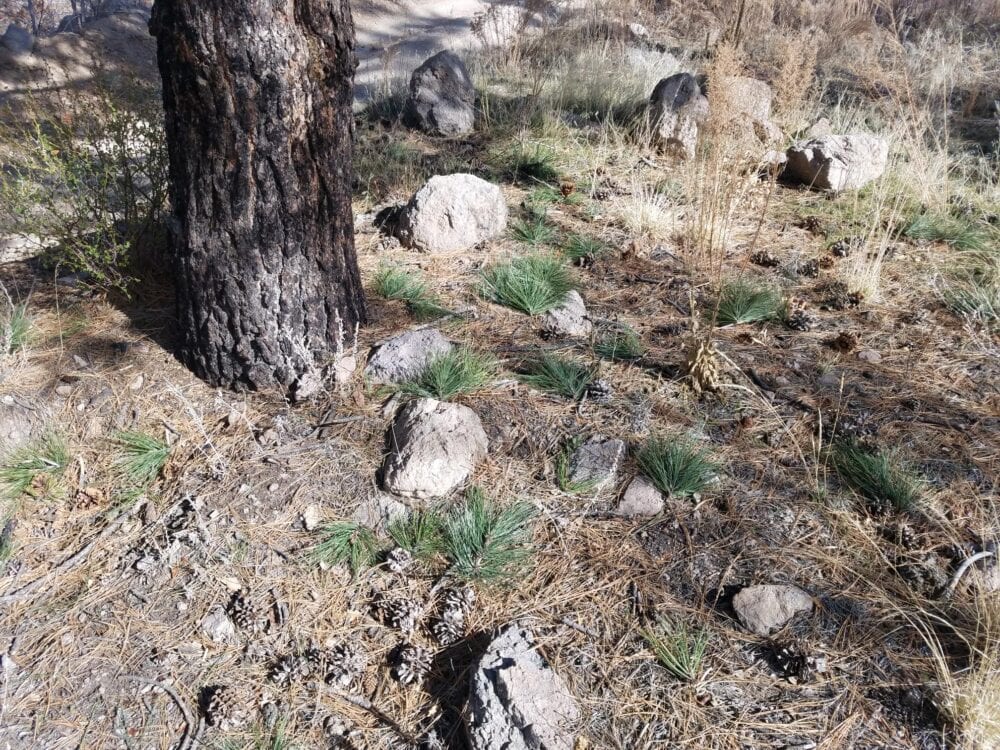
- A dark grey dorsum (back), sometimes with a red stripe along the spine
- A white or cream ventrum (belly)
- A darker side stripe that is not always present or clear
- A long, bushy tail that is dark above with a visible white edge, and white/cream below
- Long ears with tufts of dark fur on the tips in winter
- White eye rings that range from subtle to well-formed
Abert’s squirrels favor Ponderosa forests. They will make nests in branches out of twigs and needles, and will nest less commonly in tree cavities. Their diet consists mainly of Ponderosa pinecone seeds, and they will also eat inner-layer bark, flowers, and fungi in the summer. Look for tell-tale signs of bare twigs on the ground and patches of stripped bark on trees, and you’re definitely in Abert’s squirrel territory.
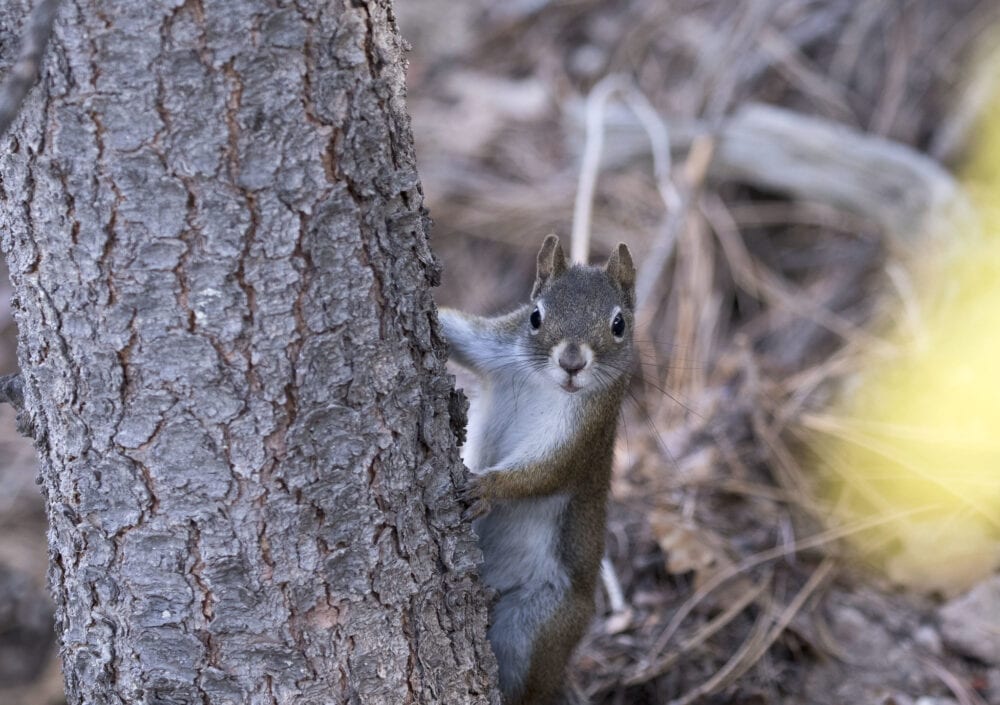
The Red Squirrel (Tamiasciurus hudsonicus)
These bold, noisy animals might be hard to locate in the branches because of their small size, but they’ll certainly let you know they’re there with loud chattering, chirping, and squeaking in unmatched displays of territoriality. Red squirrels are the most northern-dwelling tree squirrel in North America, and as altitude mimics latitude, it’s no surprise this species thrives in the mountains.
To identify a red squirrel by sight, you want to look for a small squirrel (110-250g) with:
- Red or reddish-brown dorsal coloring
- White/cream ventral coloring
- A short red tail with darker edges
- A clear, black side stripe that sometimes fades in the winter
- A clear, distinct white eye ring
- Loud vocal displays of territoriality, sometimes accompanied by pounding feet
Red squirrels favor pine forests but are also found in mixed-coniferous forests. Though they prefer to nest in tree cavities, you might also find nests in branches made of leaves, grass, bark, twigs, and lichen. They feed primarily on the seeds of pinecones but will also eat pine sap, nuts, fungi, and occasionally small birds and eggs. They are messy eaters; if you see a massive pile of pinecone scales scattered at the base of a tree or on a mound, you’re in a red squirrel’s territory.
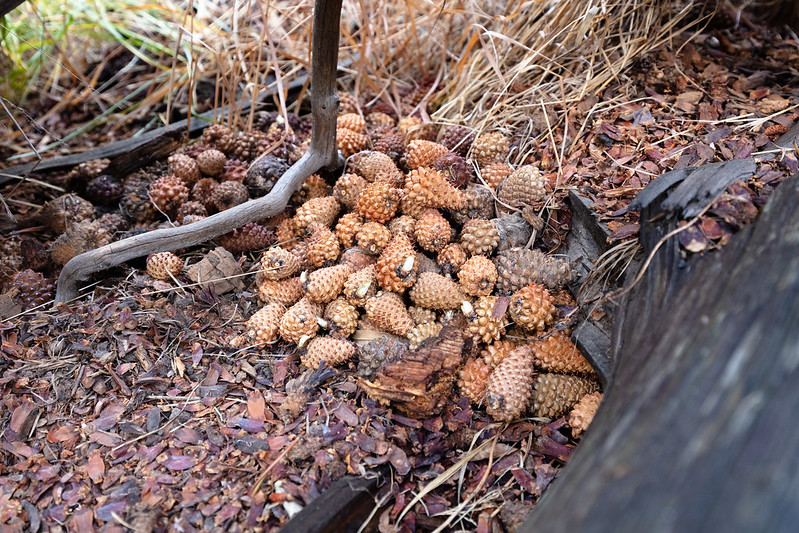
Though all tree squirrels will occasionally steal food from each other, the red squirrel is known as a master kleptoparasite (a fancy word for an animal who steals resources, in this case food). These (admittedly cute) little thieves will sneak into other squirrels’ caches of pinecones and pilfer from them! If you see two red squirrels chasing each other in the woods, one of them has likely just been caught stealing, and if they’re stubborn enough you may even see them running for their lives with a cone still in their mouth!
